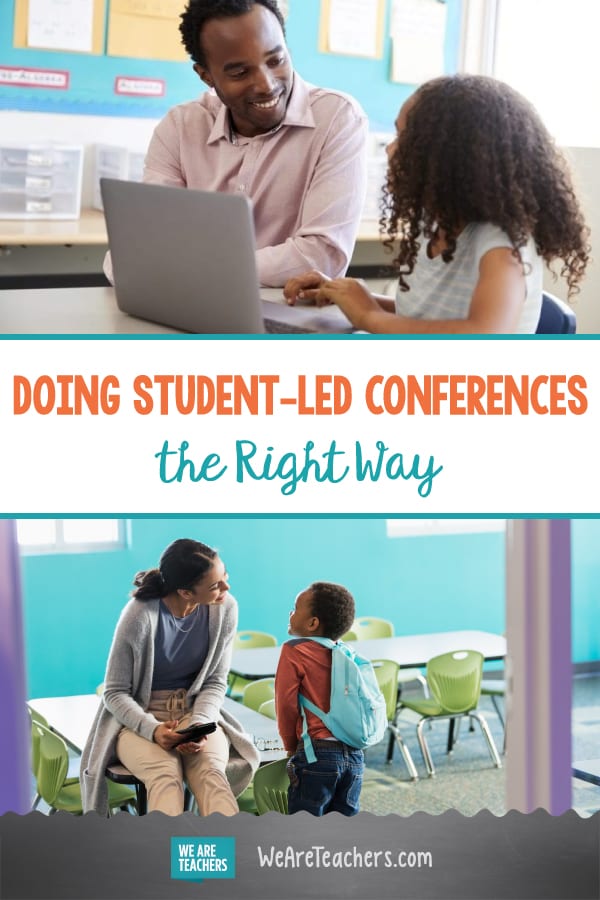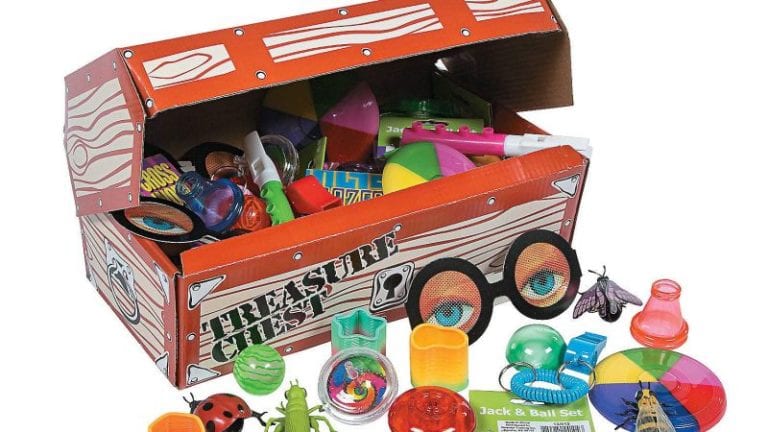This fall brought about many things new to me: a new school, grade level, and the exciting addition of student-led conferences. As a music teacher, I typically have very few parent-teacher conferences. So when my new middle school announced that we would have student-led conferences and the homeroom teachers would facilitate, I panicked. How was I going to speak about students I only saw during homeroom time?
The answer was simple: I didn’t have to because we held student-led conferences.
Setting student-led conference goals was the first step.
The goal of a student-led conference is for students to take ownership of their learning and school work. The student leads the conversation, sharing with their parents work samples, accomplishments, and achievements. In my school, we did this through Google Slides. We created a Google Slide template with a page for each course. We instructed students to insert a link, photo, video, or screenshot of work that they were proud of and demonstrated learning. Following the work samples were pages for reflection, goals, and their current grades.
Planning student-led conferences is reflective.
Students spent one week during homeroom preparing their slides. While they worked, I circulated the room, asked questions, and made suggestions. Some students needed reminders that an A in a class didn’t show what they learned. Others needed guidance in finding things they were proud of. As students worked I enjoyed observing their conversations. They discussed various projects and assignments, helping them reflect on the first seven weeks of school.
Communicating about student-led conferences is critical.
Leading up to the conferences, we told parents frequently that students were expected to attend and that the homeroom teacher (not necessarily a core teacher) would be facilitating. It was communicated at back-to-school night and through weekly school-wide emails. Grade level teachers used a shared Google Sheet to indicate any specific student concerns, so the homeroom teacher could communicate with parents. This team approach on the teachers’ side ensured all concerns for individual students would be shared and removed the concern from parents that they might miss important information by only meeting the homeroom teacher.
Conferencing was kept structured.
Conference day was great! Students arrived with their parents for their scheduled 20-minute session. I found this to be a good amount of time. Longer would have been too much for many students, and shorter would have felt rushed. Students began by introducing their parents to me and explaining the goals of the conference. Then they dove into their presentations and work samples. Parents watched and listened attentively, sometimes asking questions or commenting on various pieces of work. Students were very honest in their reflections, explaining their biggest struggles and areas they could improve. While typing those responses is one thing, verbalizing it to a parent is another! I could tell it was an honest conversation that didn’t always occur at home.
Asking parents to participate was enlightening.
When the students finished their part of the conference, we asked parents to share “two glows and two grows.” This meant describing two things they were proud of and two areas where they would like to see growth in their child. This was another very honest moment to witness. Students smiled as their parents shared their glows, often nodding in agreement regarding the grows. Finally, I shared feedback I had, along with comments that had been communicated through the Google Sheet. Not surprisingly, most of the teacher comments had already been addressed in some way during the conference. The confirmation was appreciated by all.
Reviewing the process of student-led conferences is key.
Going into conferences, I didn’t know what to expect. I’m pretty sure none of us knew what to expect. Afterward, everyone agreed it was a great opportunity to reflect, feel good, and plan for growth. Parents enjoyed hearing from their children, something often lacking in the middle school experience. Students took ownership of their work and learning.
Interested in trying student-led conferences? Here are some suggestions:
● Have a template for students to prepare what they will share. The more prepared students are, the smoother conferences will run. In our one-to-one iPad school, we used Google Slides, but paper would be just as effective.
● Scaffold the process based on your students’ age and experience in this area. Younger students will likely need more teacher involvement, while older students may need more time to truly explain and reflect on work samples.
● Explain to parents in advance (several weeks at least) how conferences will run and reiterate that students should attend.
● Have a system in place if parents have questions for a specific teacher. We had a form to fill out to place in that teacher’s mailbox and email communication was also encouraged.
Have you used student-led conferences before? Come share on the WeAreTeachers Chat group on Facebook.
Love classroom management strategies that work? Here are 12 Must-Teach Classroom Procedures and Routines to try next.


